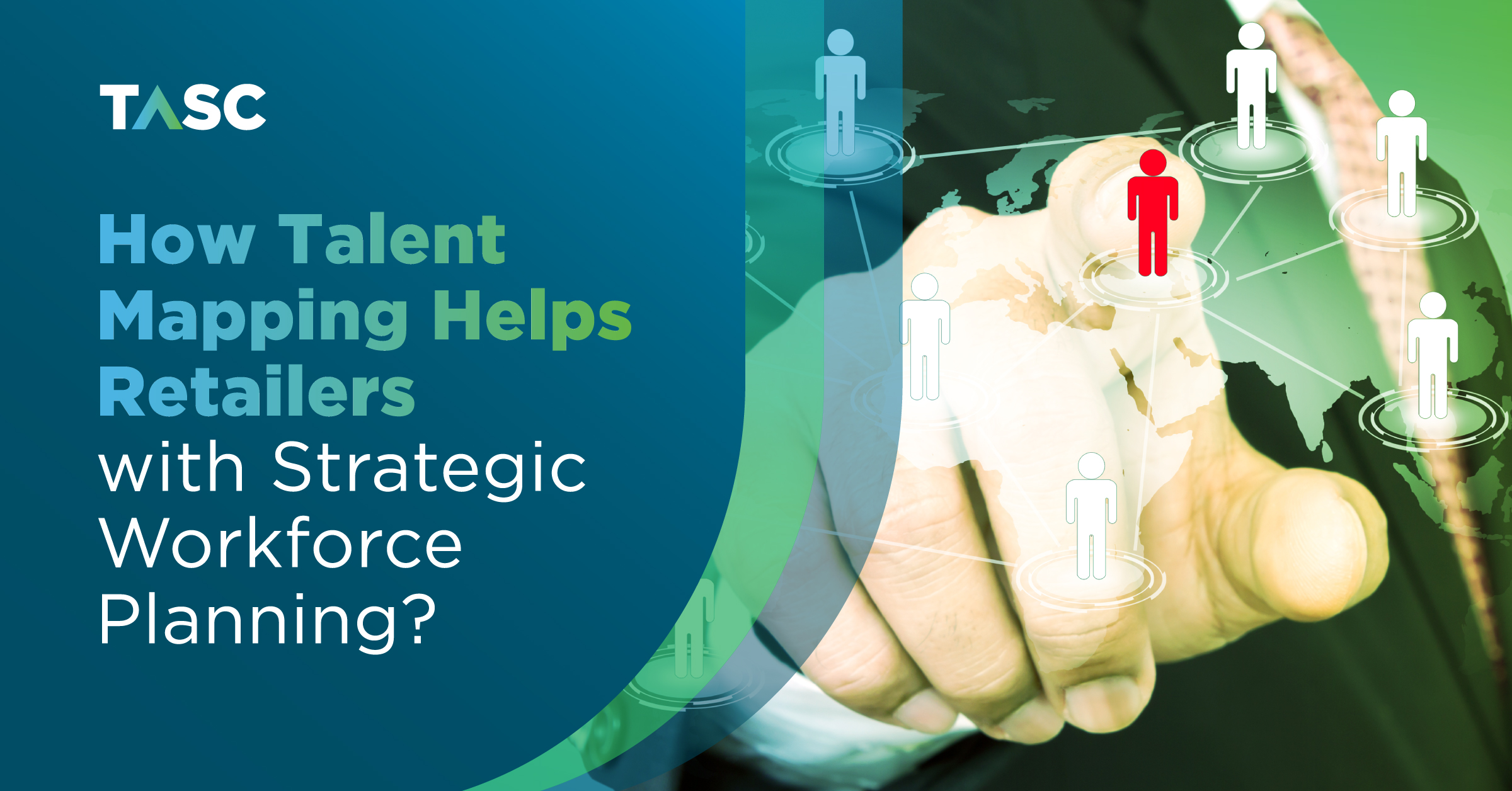How Talent Mapping Helps Retailers with Strategic Workforce Planning
The UAE retail market has been valued at USD 28.07 million in 2022, which is expected to witness a steep growth of 5.95% by the year 2028.
As a regional hub for commerce and shopping, the industry is thriving. But like any lucrative sector, it’s infamous for its fierce competition and rapid evolution.
The phrase, ‘change is the only constant’, holds quite true here.
In an industry that heavily relies on the performance of its staff – whether it’s providing a satisfactory customer experience or making more sales – having the right talent on board becomes extremely crucial.
Unfortunately, at least 76% of hiring managers agree that attracting top candidates is their greatest challenge.
However, finding the right people isn’t enough for a retail business. You must even optimise your workforce capabilities to place individuals where their contributions matter most.
Now, how do you do that?
Turns out, one of the effective ways to do that would be to implement talent mapping as part of your recruitment strategy.
Talent mapping is essentially an advanced technique that pens the skills, ambitions, and potentials necessary to shape a dynamic workforce.
Recently, the talk about deconstructing jobs into tasks, skills, and activities has gained a lot of momentum. More organisations are ditching the traditional approach of focusing on job roles and adopting a practice that looks at skills as a measurement unit.
As a retailer, you can plan career paths according to the specific individual strengths your organisation demands for your employees.
By coupling it with attractive growth prospects, you can also empower your team to acquire those skills through available resources, ultimately driving innovation and organisational growth.
It goes without saying that your people are the core of your retail business. You can’t make more sales, generate more revenue, and scale your business unless you have people with the right skills.
When you invest in a well-planned and executed talent mapping process, you not only get to understand and leverage the unique strengths of your current employees but also look for talent in the candidate market who can fill the skills gap in your organisation.
Talent Mapping – What Does It Mean?
At its core, talent mapping is an advanced and revolutionary strategy used in talent management to breakdown the different skills, capabilities, and other elements required in the workforce.
When you opt for this strategy, your object is to intelligently position your current employees in roles that best align with your company’s needs and overall business strategy.
When you take a deeper dive into each employee's technical skills, soft skills, and work experience, you get to use that information to channel their efforts into an area of your business where they’ll thrive as employees.
For instance, you can breakdown the skills of your current employee pool based on –
- Time Management
- Storytelling Ability
- Negotiation
- Communication
- Retail Tech
- In-Depth Product Knowledge
Based on the data you collect, you can implement one of the well-known talent mapping approaches called the 9-box grid to classify your workforce.
This way, you will be able to find out who the enigmas, core players, high performers, and bad hires are in your company.
When you execute this explorative approach, not only will you get to identify skills gaps within your organisation, but also pinpoint those talent in your organisation who can realise their hidden potential through proper exposure and training.
When you do talent mapping the right way, you can systematically improve your retail workforce's overall capabilities.
3 Primary Benefits of Talent Mapping in Retail
It goes without saying that talent mapping can reap tons of benefits for your business. Here are three ways it’s going to matter –
Talent Mapping Can Help You Proactively Plan for the Future –
Through talent mapping, HR leaders in your company can plan for future workforce needs as per the company’s strategy. As mentioned earlier, you will be able to predict the gaps in skills that your business will likely experience in the upcoming years.
Taking technological advancements into consideration, you’ll also be able to segregate skills and capabilities that can be automated and don’t require a human touch. This way, you can invest in people who’ll be assets to your organisation.
Not only that, you can also implement it for succession planning. As you’ll have a clear idea of the skills and potential of your current employees, you can identify and groom future leaders within the company to take up executive roles.
Talent Mapping Can Help You Retain Employees for the Long Run –
Now, let’s look at things from the employee’s perspective.
When you implement talent mapping, you get a clearer understanding of each employee's skills and aspirations, which helps improve the employee development process.
The data insights can have a tremendous role in employee retention, provided you use them right.
Essentially, you match employee skills in a way where their strengths are highlighted and contributions truly valued. At the same time, it opens up opportunities for them to move sideways into new roles and even upwards in a direction where their skills match. Not only does it foster a sense of purpose, but it also opens up doors to career progression.
In a recent survey of 400 employees, around 70% of participants mentioned that training and development opportunities have influenced their decision to retain their jobs.
It’s evident that investing in tailored training and development can play a positive role in increasing job satisfaction and decreasing attrition rates.
The long-term impact for you would be sustained engagement, better business outcomes, and increased employee loyalty.
Talent Mapping Can Improve Organisational Agility –
Another indirect but substantial benefit of talent mapping is helping you stay flexible because it can access a system that allows your business to quickly find and use the right people to handle new business needs.
The retail industry is changing very fast, and when you are fully aware of the skillset at your disposal, you get to make smart choices on placing talent in positions that can facilitate the immediate success of your business and, at the same time, train them for future needs.
It’s the insurance your company needs to prevent the tough times and even ride them when the time comes.
Steps to Integrate Talent Mapping in Your Organisation
By now, you’re aware that talent mapping is a strategic move for your business.
But how do you integrate it?
We’ve prepared a list of six actionable steps that you can take to do it –
- Defining Key Competencies – Begin the process by identifying key competencies and skills necessary for each role while ensuring alignment with the strategies goals of the company.
- Assessing Your Talent Market – Assess your workforce's skills, capabilities, and potential by analysing performing data, peer and manager feedback, and skills assessments.
- Identifying Skills Gaps – In the third step, you have to compare the data with role-specific competencies to pinpoint skills gaps or areas of development.
- Creating Development Plans – You must craft employee development plans based on the talent assessments and identified skills gaps. These plans will outline actions, experiences, or training programs customised to help employees acquire the necessary skills for specific career aspirations.
- Training Managers for Progress Tracking – Provide training to managers to incorporate talent mapping so they can accurately track the progress of the development plans.
- Adjusting the Strategy – You must review performance data by having detailed conversations with managers. The feedback you receive can help refine the strategy for the better.
Wrapping Up
To sum up, talent mapping isn’t a one-time thing. Instead, it should be part of your company’s yearly plan. You should also review it every few months to ensure optimal delivery efficiency.
The retail industry is changing every day, and in a world that’s so dynamic, talent mapping will play a key role in your success. You need the right people in your team to grow your company quickly and steadily.
When you adopt this approach, you get to plan your workforce better, improve the hiring and training of employees, and plan for a better future.
Do it right, and talent mapping will become the secret weapon that drives your retail business to accelerate growth while maintaining a competitive edge in the years to come.





